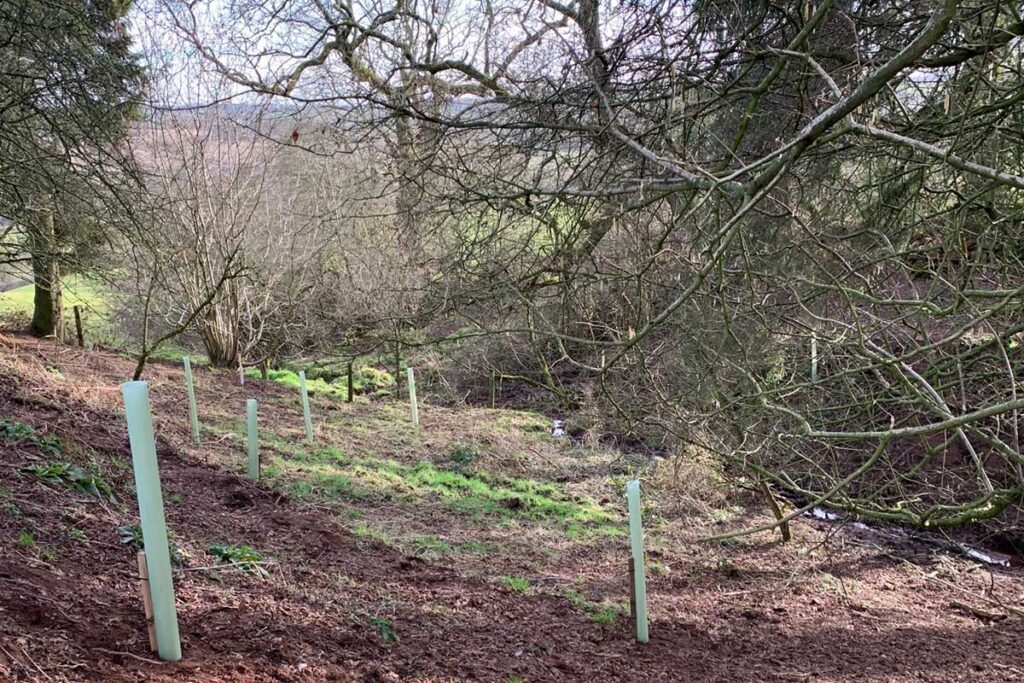Over 400 trees have been planted in Mayfield over the last few weeks by the White Peak Farmers and their volunteers.
We’ve been enhancing small woodlands and hedgerows to secure habitats for butterflies and other animals.
We’ve put elms, crab apple, hawthorne, alder buckthorne, hazel, field maple, bird cherry, oak and small leaved lime trees into the ground.
Wych elm is one of the species we’ve planted – hardier than English elm and found further North. Despite the English Elm’s name, Wych Elm is the only truly native elm. It is unfortunately, though, affected by Dutch Elm disease so we have also been planting Ulmus lutece, a cultivar which is more resistant. Elm, especially Wych Elm, is the sole foodplant of the caterpillars of white-letter hairstreak butterfly. We hope our new elm trees will increase the colony of these butterflies in Mayfield.
Crab Apple trees support ninety different species of insects and these provide food for many birds and other creatures, which also feed on the apples.
We also planted hawthornes. Their scented flowers are very good for pollinators whilst the berries again provide food for birds and mammals. Hawthornes support over 300 insects and are a food plant for many moth species.
Alder buckthorn is the host plant of the Brimstone butterfly caterpillars. This lovely lemon yellow butterfly has veiny, pointed wings and a greyish body. Only the males are yellow though, females are greenish-white with orange spots in the middle of each wing.
Small leaved lime leaves are very good for moth caterpillars including the Lime Hawk Moth. The flowers provide nectar for bees.
Field Maple can live for 350 years. It is the only native maple tree. Traditionally it was used for carving, wood turning and making musical instruments like harps.
Of course, as well as being good for all sorts of wildlife, trees are fantastic at storing carbon and are part of the solution to climate change. Trees lock atmospheric carbon up for centuries. The more trees the better for all of us.
